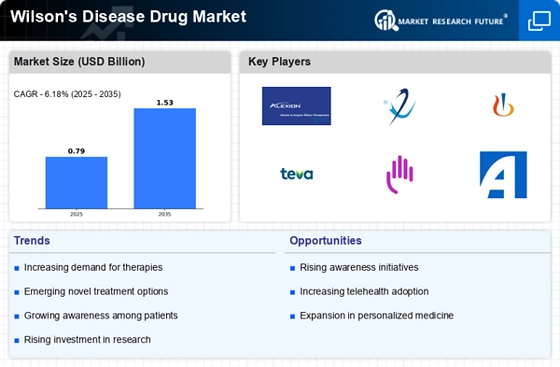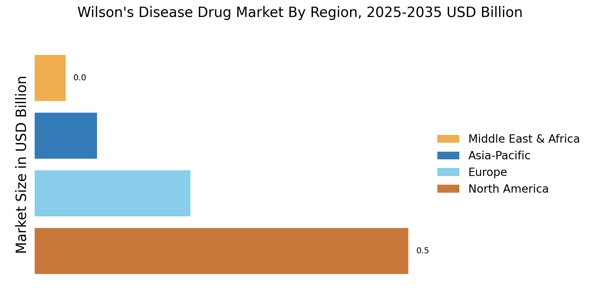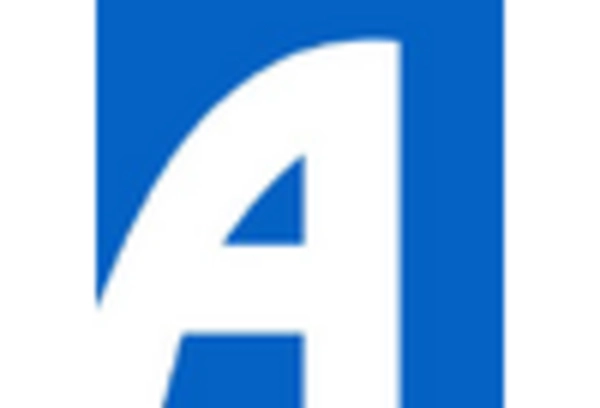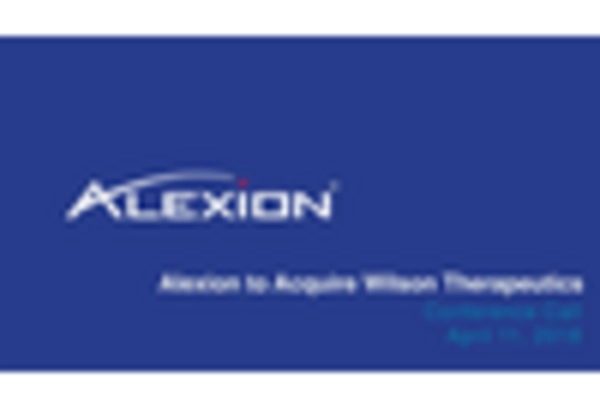Advancements in Drug Development
Innovations in drug development are significantly influencing the Wilson's Disease Drug Market. Recent advancements in biotechnology and pharmacology have led to the creation of novel therapeutic agents that target the underlying mechanisms of Wilson's disease. For instance, the introduction of new chelating agents and zinc-based therapies has shown promise in managing copper accumulation in patients. Furthermore, clinical trials are increasingly focusing on the efficacy and safety of these new treatments, with several candidates currently in various stages of development. This influx of new therapies not only enhances treatment options but also stimulates competition among pharmaceutical companies, potentially leading to more affordable pricing and improved patient access. As a result, the Wilson's Disease Drug Market is likely to experience a dynamic shift in the coming years.
Regulatory Framework Enhancements
The regulatory environment surrounding drug approval processes is evolving, which has implications for the Wilson's Disease Drug Market. Recent reforms aimed at expediting the approval of orphan drugs are likely to facilitate faster access to new treatments for Wilson's disease. Regulatory agencies are increasingly adopting streamlined pathways for clinical trials and approvals, thereby reducing the time and cost associated with bringing new therapies to market. This shift is particularly beneficial for conditions like Wilson's disease, where treatment options have historically been limited. As a result, pharmaceutical companies may be more inclined to invest in the development of new drugs, knowing that the regulatory hurdles are becoming less daunting. This trend could lead to a more vibrant and competitive Wilson's Disease Drug Market in the near future.
Patient Advocacy and Support Networks
The role of patient advocacy groups and support networks is becoming increasingly prominent in the Wilson's Disease Drug Market. These organizations are instrumental in raising awareness about Wilson's disease, promoting early diagnosis, and advocating for better treatment options. Their efforts often lead to increased funding for research and development, as well as greater visibility for the challenges faced by patients. Moreover, these groups frequently collaborate with pharmaceutical companies to ensure that the needs of patients are considered during the drug development process. This collaboration can result in more effective therapies that are tailored to the specific needs of individuals with Wilson's disease. As patient advocacy continues to grow, it is likely to have a lasting impact on the Wilson's Disease Drug Market, fostering a more patient-centered approach to treatment.
Increasing Prevalence of Wilson's Disease
The rising incidence of Wilson's disease is a pivotal driver for the Wilson's Disease Drug Market. Recent estimates suggest that the prevalence of this genetic disorder may be higher than previously thought, with approximately 1 in 30,000 individuals affected. This increase in diagnosed cases necessitates a corresponding rise in treatment options, thereby expanding the market for drugs specifically targeting Wilson's disease. As awareness grows among healthcare professionals and patients alike, the demand for effective therapies is likely to surge. This trend indicates a robust market potential, as pharmaceutical companies are incentivized to develop innovative solutions to meet the needs of this patient population. Consequently, the Wilson's Disease Drug Market is poised for growth as more individuals seek diagnosis and treatment.
Growing Investment in Rare Disease Research
The Wilson's Disease Drug Market is benefiting from a surge in investment directed towards rare disease research. Governments and private organizations are increasingly recognizing the need to allocate resources for the development of treatments for rare genetic disorders, including Wilson's disease. This financial support is crucial for fostering innovation and accelerating the drug development process. In recent years, funding initiatives have been established to encourage research into the pathophysiology of Wilson's disease, leading to a better understanding of potential therapeutic targets. Additionally, the establishment of grants and incentives for pharmaceutical companies to develop orphan drugs is likely to enhance the market landscape. As a result, the Wilson's Disease Drug Market stands to gain from this heightened focus on rare diseases, potentially leading to the introduction of groundbreaking therapies.


















Leave a Comment